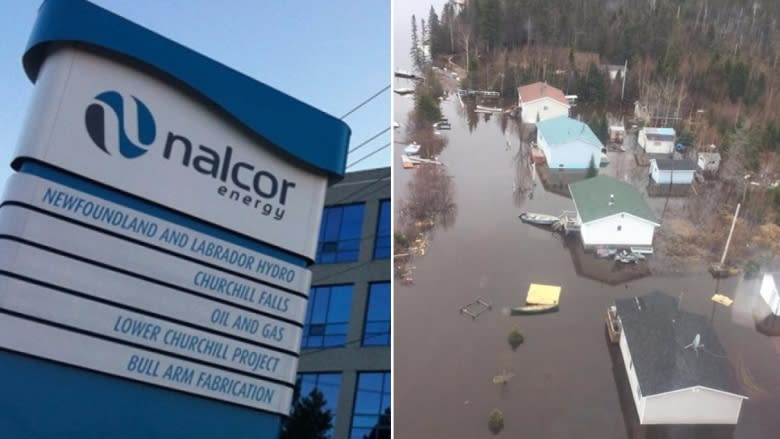Nalcor 'dismissiveness' a worry when it comes to flood blame, say MUN profs
Nalcor should not be insisting outright that its operations are not to blame for the flooding in Mud Lake, Labrador because the data isn't available to definitively rule it out, according to two professors at Memorial University of Newfoundland.
"I think this really points to the need for a future study. I worry about the dismissiveness that we've heard [from Nalcor]," said Ken Snelgrove, associate professor of civil engineering.
Joel Finnis, a climatologist and associate professor of geography at MUN, agrees with Snelgrove. Finnis said it's hard to classify the flood as either a "very extreme, one-of event" or something more ominous that is bound to repeat.
"If [something similar] happens again in two, five or 10 years, we're going to be sounding the alarms that something has shifted," Finnis told CBC Radio's On the Go.
Timeline of a flood
Snelgrove said a Water Survey of Canada report shows what happened to water levels — and when.
From May 1 to 10, the water measured about 2.2 metres. After that, the levels started to rise until about May 16, said Snelgrove.
"What happened after the 16th is that an ice jam occurred and with that, water levels rose very, very quickly," he said, noting that was around the point people had to be evacuated.
Next, the ice jam moved downstream following a surge in water and levels climbed even higher.
"At the 19th of May, I guess there had been enough pressure behind that ice jam that pushed it out into Lake Melville and the water levels diminished quite quickly then," said Snelgrove.
The timeline relates to water levels at Mud Lake. Snelgrove analyzed further data depicting the water levels, this time coming down from Muskrat Falls.
The water level was 3.4 metres around May 10, and by May 15, it topped 6 metres, according to Snelgrove.
"So what caused the ice jam would be the next question," he said.
Too quick to refute blame
Possible causes of ice jamming include a dynamic wave or a pulse of water coming down the river — and the origins of that pulse have Snelgrove wondering.
"Initially, we heard government in the media and Nalcor in the media and saying, "We didn't do anything here, we just let the water pass through.' They did. Whatever came in to the upstream end of the watershed was released through the dam."
Snelgrove said to understand the implications of the recent Mud Lake flood, people have to understand the "normal process" of water entering upstream. Usually, when it does, "it progresses downstream, it takes some time, water has a chance to build, ice has a chance to break."
That likely didn't happen this time, said Snelgrove.
"In this case, whatever water entered upstream was allowed to be, was immediately short-circuited through the headpond that was created upstream and immediately released downstream," he said.
'They used the dam as a strainer'
Snelgrove said another Nalcor action deserving of scrutiny is the Crown corporation maintaining water levels at 21.5 metres, which Snelgrove said would "keep a stable ice surface."
"They wanted the ice to melt ... rather than be broken up and transported through the spillway below the dam," Snelgrove explained.
The motivation, he said, comes down to what is good for the company.
"The reason that they didn't want ice [in] broken-up pieces to move down to the spillway was that they wanted to prevent ice jams in the river below Muskrat Falls. Because ice jams below the river in Muskrat Falls would lead to higher water levels downstream of Muskrat Falls, which would have flooded their temporary works," he explained.
"It would have flooded their powerhouse, and the main dam and the downstream cofferdams ... They used the dam as a strainer for ice," Snelgrove said.
Nalcor officials have repeatedly insisted the company's operations are not to blame for the flooding.
Premier Dwight Ball said this week that a review would begin "as quickly as possible."
"We've got to include as many people as we can, independent of Nalcor and those folks," he said at a meeting with Mud Lake residents.
Both professors agree a study is needed to dig deeper into the flood, and Snelgrove said that's really the main way to definitively rule out that Nalcor's operations triggered, impacted or caused the flooding.
"Maybe it's not [Nalcor's fault], but maybe that it is. Maybe that if Mother Nature is driving the bus, and she is, and all of a sudden that you tell her you want to get behind the wheel, I think you really have to take care," he said.




